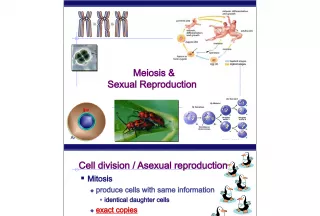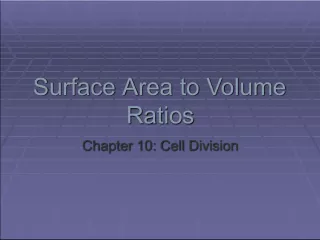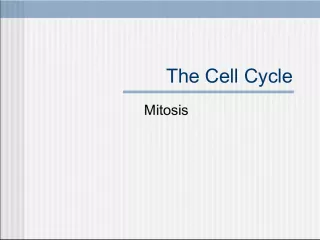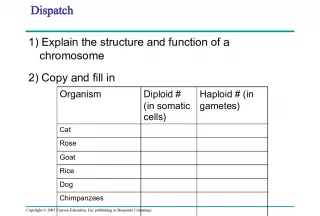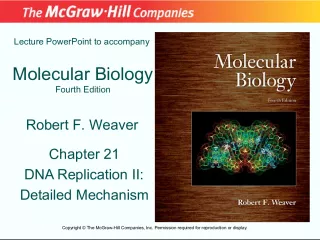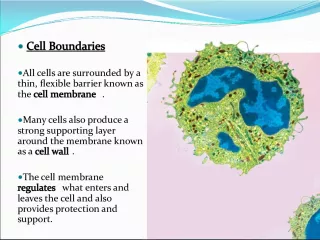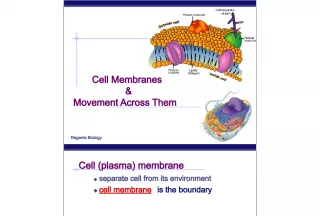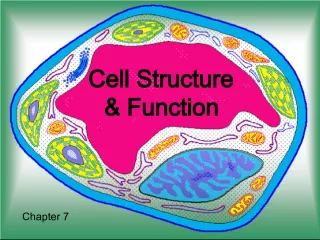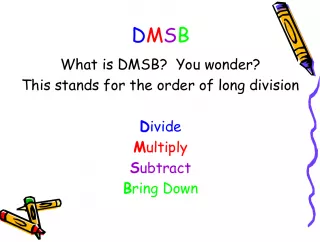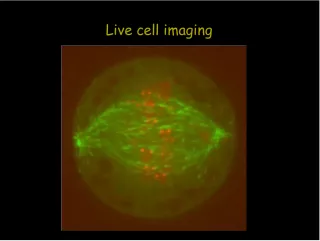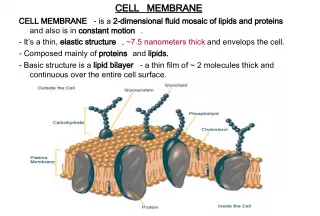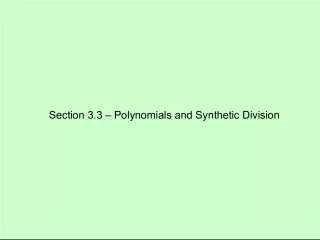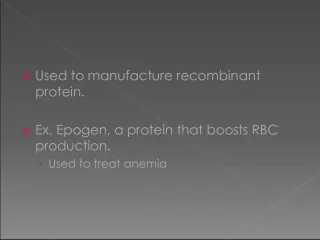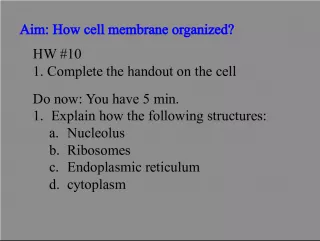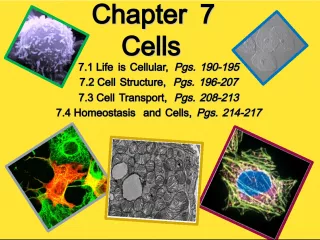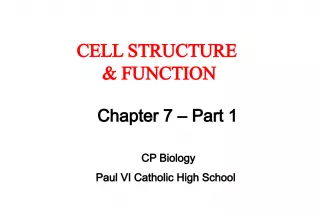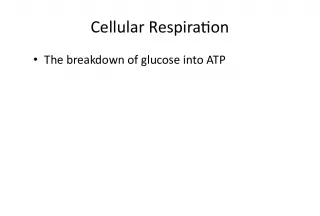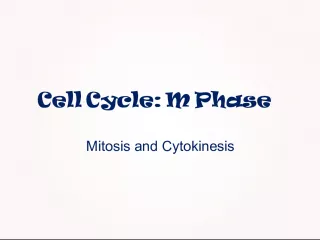The Importance of Cell Division and DNA Replication
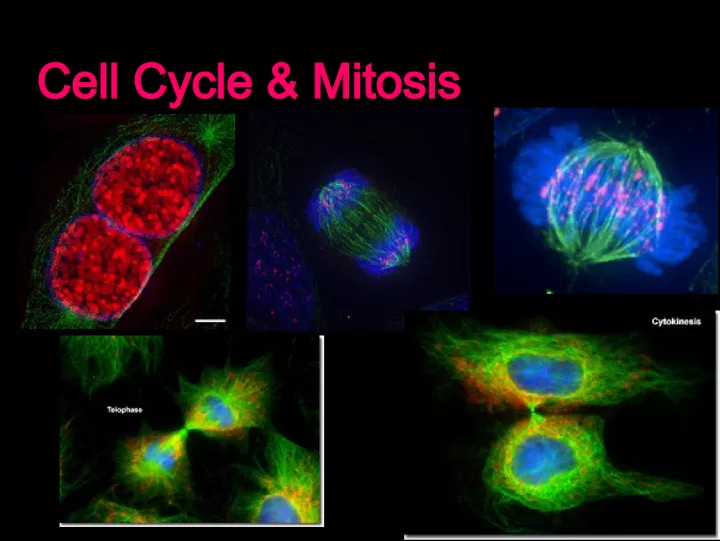

The cell cycle and mitosis ensure the production of new cells for growth and repair while DNA replication maintains the genetic information needed for cells to function properly.
- Uploaded on | 3 Views
-
 victoria1
victoria1
About The Importance of Cell Division and DNA Replication
PowerPoint presentation about 'The Importance of Cell Division and DNA Replication'. This presentation describes the topic on The cell cycle and mitosis ensure the production of new cells for growth and repair while DNA replication maintains the genetic information needed for cells to function properly.. The key topics included in this slideshow are . Download this presentation absolutely free.
Presentation Transcript
2. 2 Cell Division Cell Division All cells are derived from pre- existing cells All cells are derived from pre- existing cells New cells are produced for growth and to replace damaged or old cells New cells are produced for growth and to replace damaged or old cells
3. 3 Keeping Cells Identical Keeping Cells Identical The instructions for making cell parts are encoded in the DNA , so each new cell must get a complete set of the DNA molecules The instructions for making cell parts are encoded in the DNA , so each new cell must get a complete set of the DNA molecules
4. 4 DNA Replication DNA Replication DNA must be copied or replicated before cell division DNA must be copied or replicated before cell division Each new cell will then have an identical copy of the DNA Each new cell will then have an identical copy of the DNA Original DNA strand Original DNA strand Two new, identical DNA strands Two new, identical DNA strands
5. 5 Identical Daughter Cells Identical Daughter Cells Parent Cell Parent Cell Two identical daughter cells Two identical daughter cells
6. 6 Prokaryotic Chromosome Prokaryotic Chromosome The DNA of prokaryotes (bacteria) is one, circular chromosome attached to the inside of the cell membrane The DNA of prokaryotes (bacteria) is one, circular chromosome attached to the inside of the cell membrane
7. 7 Eukaryotic Chromosomes Eukaryotic Chromosomes Each chromosome is composed of a single, tightly coiled DNA molecule Each chromosome is composed of a single, tightly coiled DNA molecule Chromosomes can ’ t be seen when cells aren ‘ t dividing and are called chromatin Chromosomes can ’ t be seen when cells aren ‘ t dividing and are called chromatin
8. 8 Eukaryotic Chromosomes Eukaryotic Chromosomes All eukaryotic cells store genetic information in chromosomes All eukaryotic cells store genetic information in chromosomes Most eukaryotes have between 10 and 50 chromosomes in their body cells Most eukaryotes have between 10 and 50 chromosomes in their body cells Human body cells have 46 chromosomes or 23 identical pairs Human body cells have 46 chromosomes or 23 identical pairs
9. 9 Chromosomes in Dividing Cells Chromosomes in Dividing Cells Duplicated chromosomes are called chromatids & are held together by the centromere Called Sister Chromatids Called Sister Chromatids
10. 10 Karyotype Karyotype A picture of the chromosomes from a human cell arranged in pairs by size A picture of the chromosomes from a human cell arranged in pairs by size First 22 pairs are called autosomes First 22 pairs are called autosomes Last pair are the sex chromosomes Last pair are the sex chromosomes XX female or XY male XX female or XY male
11. 11 Boy or Girl? Boy or Girl? Y - Chromosome Y - Chromosome X - Chromosome X - Chromosome The Y Chromosome Decides The Y Chromosome Decides
12. 12 The Cell Cycle The Cell Cycle
13. Inter phase = between phases Chromatin DNA Duplicates
14. G1 First growth phase - Cell grows in size - Creates mRNA and proteins - Ends when the cell enters into the S phase
15. S PHASE DNA is Replicated S phase occurs between G1 and G2
16. G2 Cell continues to grow and create mRNA and proteins Cell will duplicate organelles getting ready for the Mitosis phase
17. 17 Mitosis Mitosis Division of the nucleus Division of the nucleus Only occurs in eukaryotes Only occurs in eukaryotes Has four stages Has four stages Doesn ’ t occur in some cells such as brain cells Doesn ’ t occur in some cells such as brain cells
18. Mitosis = New Cells Results in 2 identical daughter cells 4 chromosomes 4 chromosomes
19. Onion Root Tip Mitosis Pictures Interphase
20. Pro phase Chromosomes (and copies) condense Chromatid = copy Nuclear Membrane dissappears Centriole spindles form
21. Prophase
22. Meta phase Nuclear Membrane gone Centrioles Move Spindles grow Chromosomes (with copies) line up
23. Metaphase Nuclear Membrane gone Centrioles Move Spindles grow Chromosomes (with copies) line up
24. Metaphase
25. Ana phase Spindles contract Copies pulled apart
26. Anaphase Spindles contract Copies pulled apart
27. Anaphase
28. Early Telo phase Spindles gone Nuclear Membranes form
29. Early Telophase
30. Late Telophase Nuclear Membranes are complete Mitosis is complete.
31. Late Telophase
32. Cyto kinesis Cell splits
33. Cytokinesis
34. Quiz
35. Metaphase
36. Inter phase = between phases Chromatin DNA Duplicates
37. Metaphase
38. Prophase
39. Anaphase
40. Telophase
41. Late Telophase Nuclear Membranes are complete Mitosis is complete.
42. Mitosis = New Cells Results in 2 identical daughter cells 4 chromosomes 4 chromosomes
